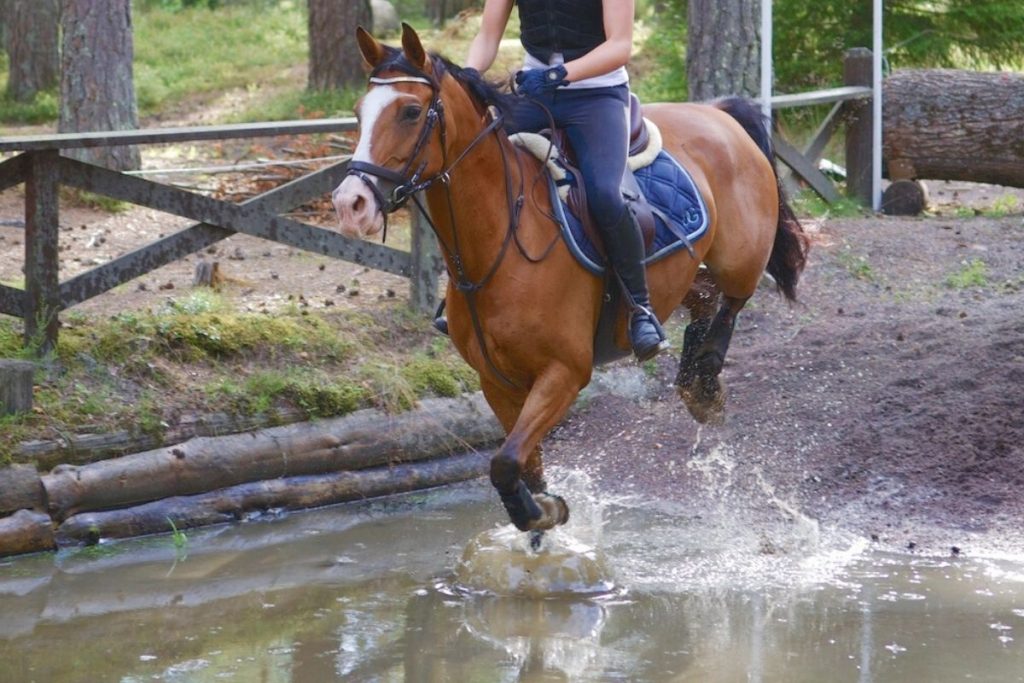All sports have risks of injury, and show jumping is no different. Show jumping is an English equestrian event that involves jumping over various obstacles. This involvement of horses, obstacles, and riding bring forth numerous areas for complication.
With the involvement of eventing in the Olympic games since the early 1900s, show jumping has grown widely in popularity across the globe. As more and more people begin to enjoy the sport of show jumping, the higher the likelihood of accidents, injury, or even death occur.
Is show jumping dangerous? Yes. All equestrian sports have a level of risk much higher than other sports due to the involvement of horses, which are sentient beings. Show jumping is regarded as one of the most dangerous horse events, but the most dangerous equestrian event is usually considered to be cross country.
So, what makes the horse eventing so dangerous? There have been numerous discussions amongst experts, riders, or even just spectators about the reasons why so many horses and riders become injured during training and events.
There is not a succinct answer. Throughout this article, we will discuss the dangerous implications of not only show jumping but also in aspects of eventing and more specifically, in cross country.

Is Show Jumping Dangerous?
All horse related sports and events should be considered dangerous. Show jumping is no different. When you combine the activity of jumping over various obstacles with that of the training of the horse and the skill of the rider, each movement contains a variable that could lead to an accident.
Even experienced riders and trainers are not immune to falling off the horse; in fact, falling off is entirely expected to happen. Most of the time, riders are not severely injured when falling off of their horses, but there is always the chance that you could be.
With that in mind, there was research conducted in 2017 on this topic. The study found that upwards of 60% of equestrian accidents were all preventable (x). This largely puts the blame onto the rider, but there is still a window of 40% left for accidents that were due to circumstance.
Compared to horse events such as dressage and barrel racing, show jumping has a larger inherent risk simply due to the activity of jumping. While all horse events require immense skill and training for riders and horses to be successful, any form of jumping involves more balance for both the rider and the horse.
Not only that, but horses must be prepared for jumps of all kinds. If a horse becomes spooked or intimidated by a jump, they can stop suddenly and throw their rider off. This is also true for horses that are unruly in any regard as they may act out by bucking or rearing at inappropriate times.
The Most Dangerous Horse Event
While show jumping is most definitely within the most dangerous horse events, many professionals do not see it as the most dangerous overall. This is primarily due to the fact that show jumps are designed to be dismantled. This not only makes setting up and taking down the course easier, but it gives the horse more leeway if they were to hit the jump.
Not all jumping events have jumps that are as light or as easy to dismantle. That factor alone can add a significantly higher risk factor. As jumping became integrated into the Olympics, it had to evolve over time. Today, Olympic riders participate in a triathlon of sorts, known as eventing.
Eventing
This Olympic equestrian sport can be broken down into three main parts: Dressage, Show Jumping, and Cross country. These three events have become a strategic device that ultimately allows for more rider safety.
Judges are able to watch both the horses and riders participate in a more controlled event, dressage, for the first portion of the competition. If the judges deem either the horse or the rider incapable or unsafe in any manner, they will not be allowed to compete in the other two events.
The method of observation alone is not flawless, but it does help to prevent numerous injuries and deaths. This is also employed during the show jumping portion of the event.
As the risk level has risen, the skill level must as well. If a judge deems either the rider or the horse incapable of safely riding the cross country course, they will not be allowed to participate.
This leads us to the discussion of the most dangerous horse event. It is widely disputed about which type of riding has the most risk, and it should be emphasized that any interaction with horses involves risk. However, the one event that statistically has the highest number of rider deaths is cross country.
Cross Country

This final part of the eventing competition is an equestrian jumping event that is a true test of endurance and knowledge. There are often lower-level cross country events in which cross country is the only aspect of the competition. These tend to be held on shorter courses in more controlled environments.
The overall purpose of the event and what the judges are looking for is not only the speed at which the horse and rider are able to complete the course but the knowledge of pacing.
The ability to bring a horse across a course littered with obstacles requires extensive training and expertise. The horse must be in peak physical condition in order to have the endurance and ability to perform such complicated and repetitive actions.
Unlike show jumps, all cross country jumps are designed to imitate natural obstacles a horse and rider would encounter if they were riding across a natural setting. These obstacles and jumps then include things like logs, water troughs, banks, and ditches.
This type of obstacle then becomes a more permanent feature than show jumps that you are able to dismantle. So, if a horse is to impact the jump, it would not come apart. This can cause injury to not only the horse, but with the horse’s balance lost, the rider’s is lost as well.
One common accident that causes death or, at the very least paralyzation of the rider is when a horse somersaults over a jump. Whether the horse impacts the jump flipping them on top of the rider or it is simply a misstep on the landing that flips them over, this action is often referred to as the neck breaker fall.
A large percentage of these falls result in serious injury due to the fact that the rider not only impacts the ground head first, but the horse will often flip on top of them.
The mere fact that the jumps are heavier, many of them do not move, and the jumps are larger contributes to the dangerous nature of the cross country course. The skills a horse and rider learn in show jumping can be transferred but will not always apply perfectly. Both events are dangerous and require extensive amounts of training and skill.
Rider Experience
One of the best ways to prevent injury is for the horse and the rider to be extremely skilled and to undergo professional training. As a horse becomes more comfortable and less intimidated by large jumps, they are less likely to make a misstep or mistake.
The same can be said for the rider. As their confidence and knowledge grow, they are able to read not only the course with greater ease, but they are able to read the horse much better too.
